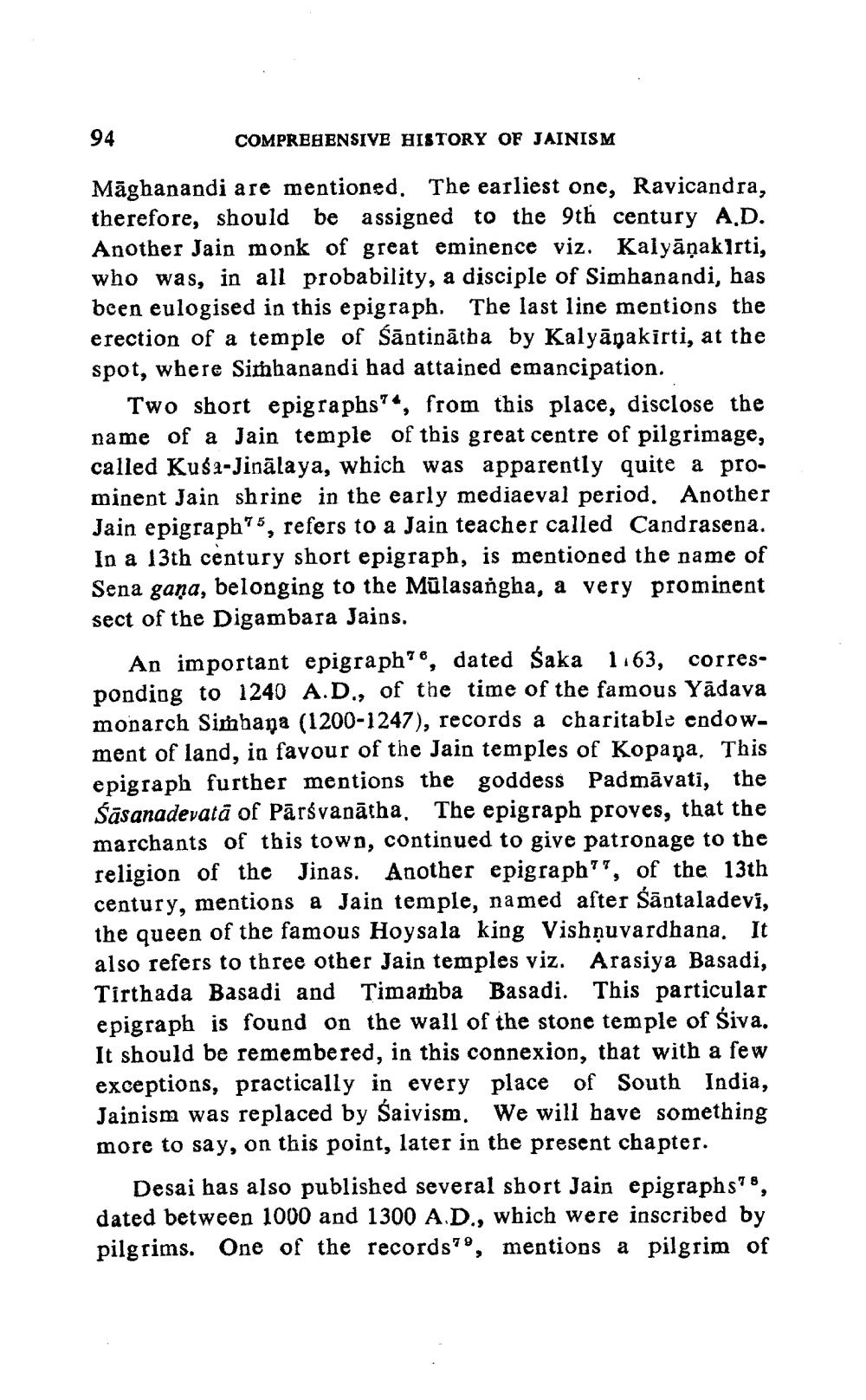________________
94
COMPREHENSIVE HISTORY OF JAINISM
Māghanandi are mentioned. The earliest one, Ravicandra, therefore, should be assigned to the 9th century A.D. Another Jain monk of great eminence viz. Kalyāņaklrti, who was, in all probability, a disciple of Simhanandi, has been eulogised in this epigraph. The last line mentions the erection of a temple of śāntinātha by Kalyānakirti, at the spot, where Simhanandi had attained emancipation.
Two short epigraphs?", from this place, disclose the name of a Jain temple of this great centre of pilgrimage, called Kuś2-Jinālaya, which was apparently quite a prominent Jain shrine in the early mediaeval period. Another Jain epigraph?5, refers to a Jain teacher called Candrasena. In a 13th century short epigraph, is mentioned the name of Sena gana, belonging to the Mülasangha, a very prominent sect of the Digambara Jains.
An important epigraph?6, dated Śaka 1163, corresponding to 1240 A.D., of the time of the famous Yadava monarch Simhaņa (1200-1247), records a charitable endowment of land, in favour of the Jain temples of Kopaņa. This epigraph further mentions the goddess Padmāvati, the Śāsanadevatā of Pārsvanātha. The epigraph proves, that the marchants of this town, continued to give patronage to the religion of the Jinas. Another epigraph??, of the 13th century, mentions a Jain temple, named after śāntaladevi, the queen of the famous Hoysala king Vishņuvardhana. It also refers to three other Jain temples viz. Arasiya Basadi, Tirthada Basadi and Timamba Basadi. This particular epigraph is found on the wall of the stone temple of Siva. It should be remembered, in this connexion, that with a few exceptions, practically in every place of South India, Jainism was replaced by Saivism. We will have something more to say, on this point, later in the present chapter.
Desai has also published several short Jain epigraphs8, dated between 1000 and 1300 A.D., which were inscribed by pilgrims. One of the records?', mentions a pilgrim of




